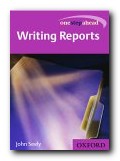What is structure?
Structure is the underlying framework which holds something together. You might not be able to see it, but it’s underneath the outer shape – like the skeleton of a body or the steel girders under the surface of a skyscraper.
The most suitable structure for an essay will depend upon the subject, the title of the essay, or the question to which it is an answer. So the structure for any given piece of work will grow naturally out of these factors. But you can learn about the process fo creating structure by following these guidance notes. Your essays need to be well structured, and this is one simple way of understanding what that means and what is required.
The simplest structure or plan for any essay is as follows:
- introduction
- main contents
- conclusion
This is the basic minimum. Keep in mind that it must start with an introduction and end with a conclusion. Of course, that is rather simplistic, but it’s important that you grasp this basic shape or arrangement of parts.
You could think of it like a sandwich. The introduction and conclusion are like the outer layers of bread, and the main contents are the filling – the meaty or more serious part. You will still need to arrange the main contents in some way – but we’ll come to that next.
Arranging the parts – 1
The first thing to recognise is that the body of the essay – the main arguments – need to be arranged in some way. The arrangement of these parts will depend upon the subject, but it may be any of the following:
- logical progression
- increasing significance
- equal significance
- chronological order
- narrative sequence
- category groupings
Imagine you were writing an essay about French wine. You have decided to discuss four red wines and four white wines. The structure for this essay could be as shown here.
Essay structure
1. Introduction
2. Red wines
- wine 1
- wine 2
- wine 3
- wine 4
3. White wines
- wine 1
- wine 2
- wine 3
- wine 4
4. Conclusion
This is clear, simple, and uncomplicated. The red wines have been kept separate from the white wines, so the essay structure is in four distinct parts. There are also four separate examples under red wine and white wine – so the essay is nicely balanced, with equal weight given to each category.
If you are in any doubt, it’s always a good idea to create a clear and simple structure of this kind. But if you felt more ambitious, you could arrange the same elements with a different structure. Let’s see how that can be done.
Arranging the parts – 2
The last example created structure by dividing the wines into reds and whites. But you could just as easily create structure by arranging the wines by region. This could be done using arrangement shown here.
Essay structure
1. Introduction
2. Loire
- red wine
- white wine
3. Bordeaux
- red wine
- white wine
4. Cotes du Rhone
- red wine
- white wine
5. Bugundy
- red wine
- white wine
6. Conclusion
It’s the same number of examples, but the arrangement is slightly more complex. Notice that there are now six parts to the essay structure, and an example of red wine and white wine is discussed for each region
This arrangement might also make the essay more interesting to read. Notice how each item is kept separate in the essay plan – so they don’t get mixed up. And each example might be discussed in a paragraph of its own. Next we’ll see how this process can be taken one step further.
Creating essay structure
You might often be asked to write an essay considering the arguments for and against some topic or proposition. For instance – “Consider the arguments for and against congestion charges in city centres.” This is a very common form of writing exercise, because it is forcing you to look at an issue from different points of view.
There are two ways you can arrange the structure for an essay of this type. Here’s the first, which we’ll call Strategy A.
Essay plan – Strategy A
1. Introduction
2. Arguments in favour of congestion charges
- [traffic] reduces volume
- [ecology] less air pollution
- [economy] generates local income
- [politics] positive social control
3. Arguments against congestion charges
- [traffic] public transport alternatives
- [ecology] transfers problem elsewhere
- [economy] reduces profitable activity
- [politics] punishes tax-payers
4. Conclusion
The structure is simple, clear, and uncomplicated. The essay is in four parts, and the arguments in favour of congestion charges are kept separate from the arguments against.
Notice that the same topics (traffic, ecology, economy, and politics) are covered in both the case ‘for’ and ‘against’. This gives the essay some structual balance, and it shows that an effort is being made to match the substance of the arguments ‘for’ and ‘against’.
Essay structure – Strategy B
Strategy A kept all the arguments for separate from those against. But here’s Strategy B – which is the most sophisticated essay structure of all.
You can see that in this example the structure is arranged in the form of TOPICS – and each one contains an argument for and against the proposal.
Essay plan
Introduction to congestion charges
TOPIC 1 – Traffic
- [for] reduces volume
- [against] public transport alternatives
TOPIC 2 – Ecology
- [for] less air pollution
- [against] transfers problem elsewhere
TOPIC 3 – Economy
- [for] generates local income
- [against] reduces profitable activity
TOPIC 4 – Politics
- [for] positive social control
- [against] punishes tax-payers
Conclusion
The topics are kept separate, and each one is used as the basis for an argument for and against the proposition (of introducing congestion charges).
It’s important if you are using this essay structure to keep the arguments ‘for’ and ‘against’ clearly distinguished and firmly related to the question. And the topics must be clearly identified and matched. That is, you must not put an argument for economy alongside one against traffic.
This strategy should only be used if you are experienced, but the result is a more sophisticated essay. This approach demonstrates that you are able to think clearly, organise your arguments, and produce a piece of writing which delivers what the question is designed to call forth.
© Roy Johnson 2009
More on How-To
More on literary studies
More on writing skills


 1. In preparation for writing a piece of work, you should take notes from a number of different sources: course materials, set texts, secondary reading, interviews, or tutorials and lectures. You might gather information from radio or television broadcasts, or from experiments and research projects. The notes could also include your own ideas, generated as part of the planning process.
1. In preparation for writing a piece of work, you should take notes from a number of different sources: course materials, set texts, secondary reading, interviews, or tutorials and lectures. You might gather information from radio or television broadcasts, or from experiments and research projects. The notes could also include your own ideas, generated as part of the planning process. Many people have difficulties knowing how to use and in a sentence. That’s possibly because it is such a common word.
Many people have difficulties knowing how to use and in a sentence. That’s possibly because it is such a common word.